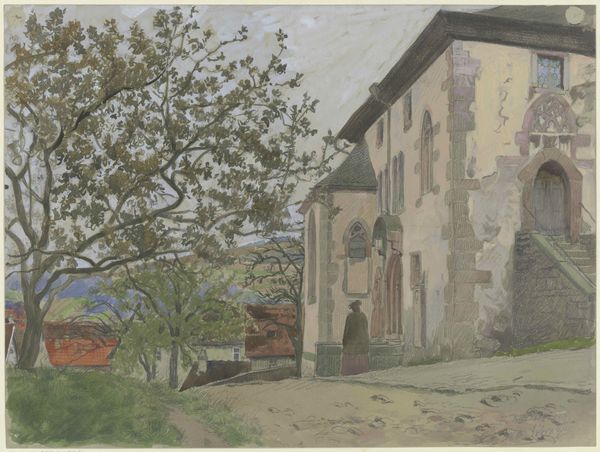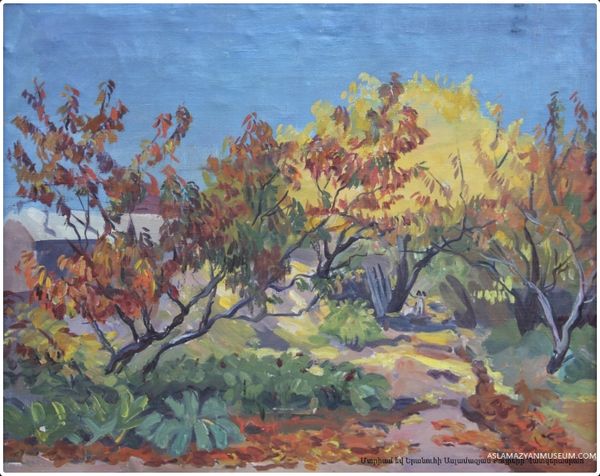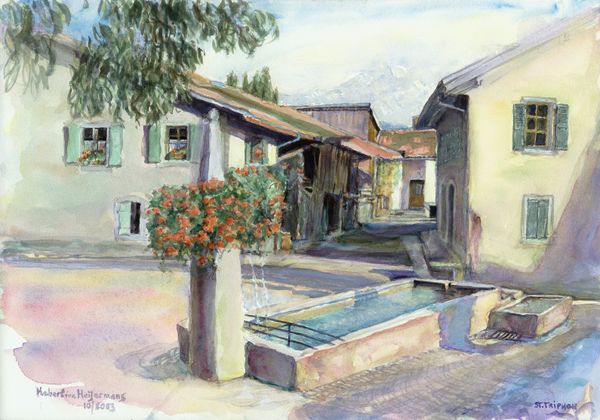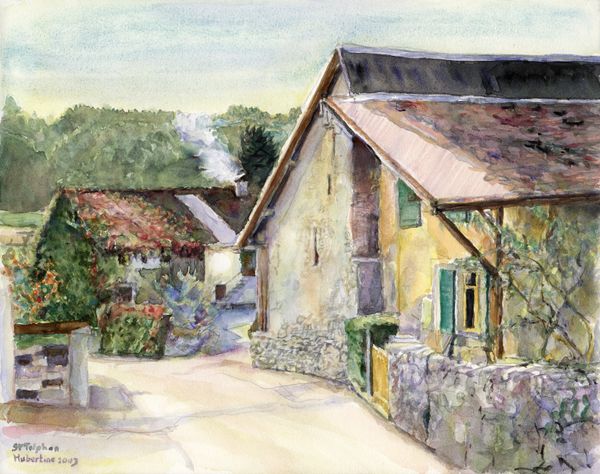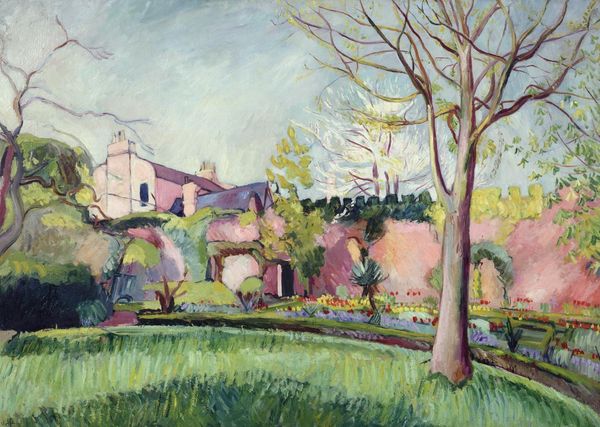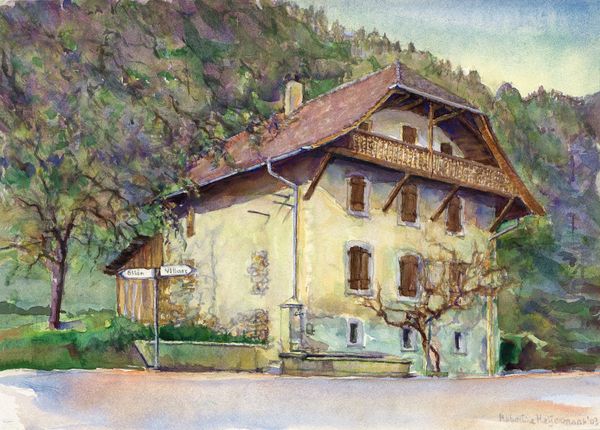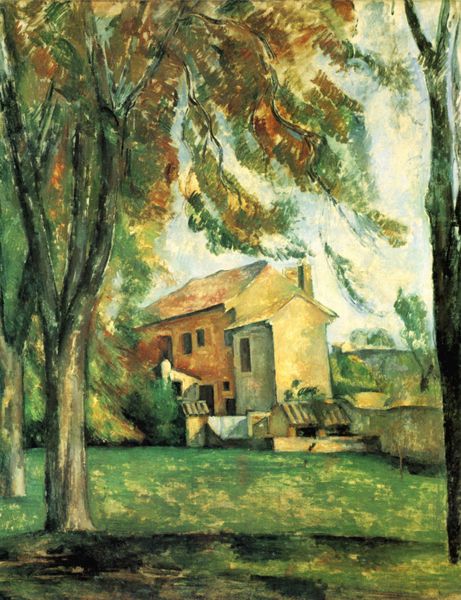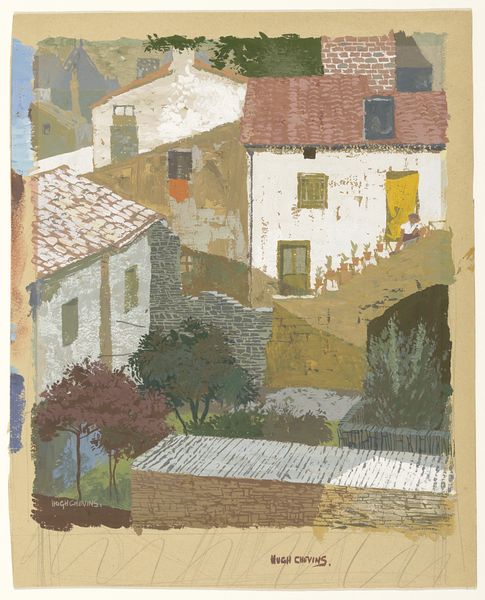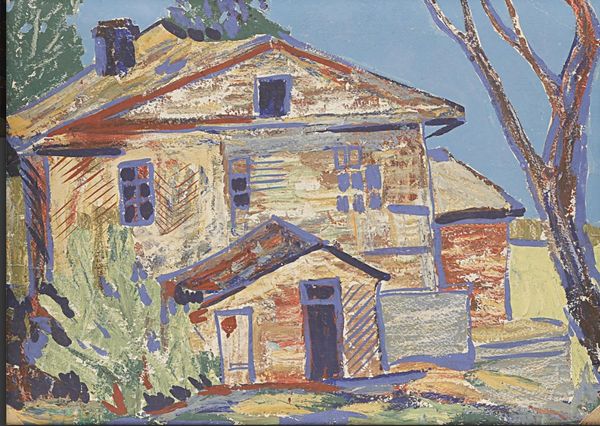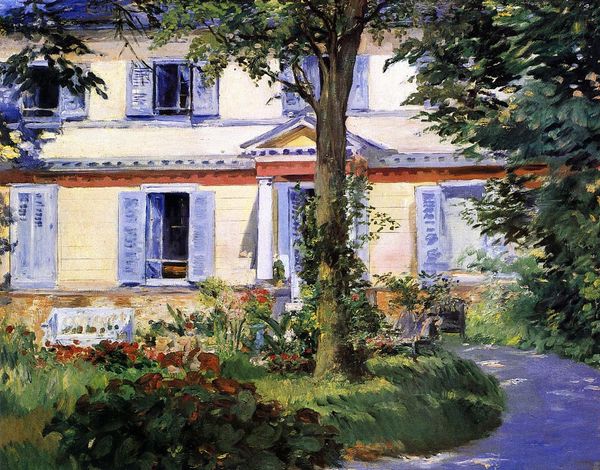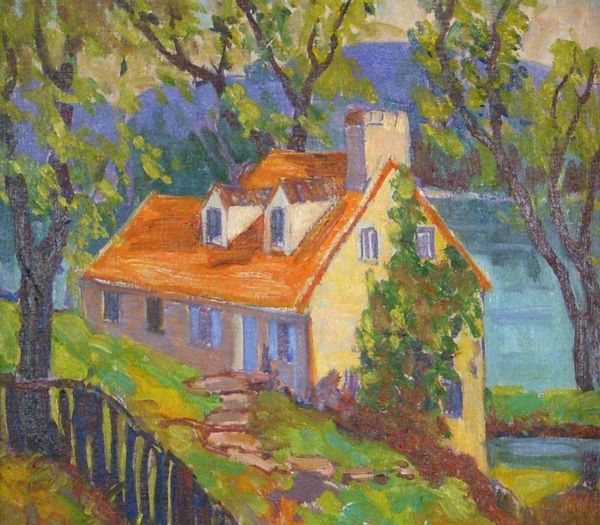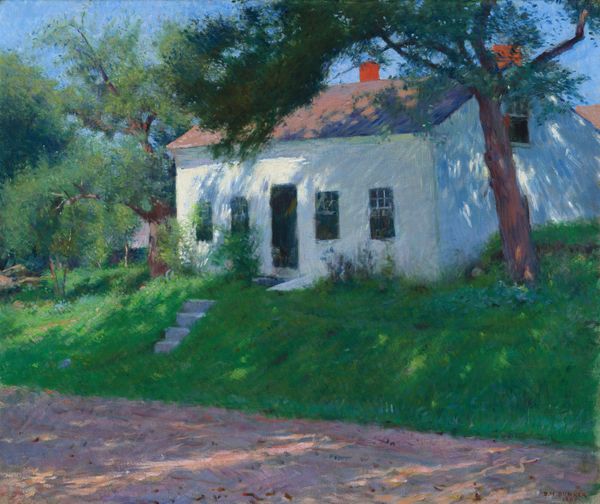
Dimensions: 293 mm (height) x 405 mm (width) (bladmaal)
Curator: Take a moment to observe "Parti fra Brejningegaard (pr.Spj\u00e6ld)," a watercolor and colored pencil piece created by Niels Bjerre in 1934. Editor: Immediately, it’s that large tree – it dominates the composition. It feels both lush and almost spectral, casting a rather poignant shadow across that pristine green lawn. Curator: Bjerre's use of color is certainly striking. The juxtaposition of the almost aggressively cheerful lawn with the pastel buildings... it sets a very particular mood, doesn't it? There's a certain naive quality, but the structures themselves feel firmly rooted. The play of light, of course, really sings, particularly when observing Bjerre's implementation of impressionistic techniques within this cityscape. Editor: Precisely. It's the way the buildings are defined, not by lines but by planes of colour. Observe how Bjerre models with varying tonalities. See, he outlines forms, hinting at a structure underneath—the barest armature. Is that really red blooms on that tree or simply blobs of raw energy, bursting forth from a shadowy nest of branches? Curator: Good question. The execution feels quite immediate, perhaps even created "en plein air." There's a directness about it. This wasn’t fussed over in a studio, which certainly informs that immediacy you picked up on. The scene appears so utterly still, and in this quiet stillness, the imagination fills the silence. Do you perceive a possible symbolism or psychological reading here? Editor: I find myself drawn to how the buildings' colours almost disappear into the skyline's tonal shifts, blurring any fixed horizon. This feels psychologically like the quiet surrender to time, how the landscape and buildings mirror each other's organic existence. Perhaps a longing for impermanence, set against such a permanent edifice of cultural legacy. Curator: A potent observation about enduring cycles. Bjerre asks us not only to examine what he created on the canvas, but to dive into ourselves, no? To sit within the Danish stillness, to ponder temporality and time and lasting structure, to understand each turn. What are your parting thoughts, knowing we have just minutes left here? Editor: Ultimately, "Parti fra Brejningegaard" uses art as life and the viewer as the meeting point. A potent mix, indeed.
Comments
No comments
Be the first to comment and join the conversation on the ultimate creative platform.
